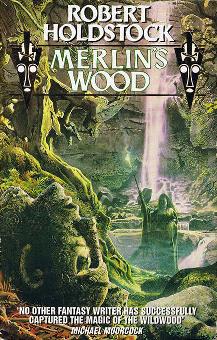
Merlin is a mythical figure prominently featured in the legend of King Arthur and best known as a mage, with several other main roles. The familiar depiction of Merlin, based on an amalgamation of historic and legendary figures, was introduced by the 12th-century British pseudo-historical author Geoffrey of Monmouth and then built on by the French poet Robert de Boron and their prose successors in the 13th century.

The Lady of the Lake is a name or a title used by several either fairy or fairy-like but human enchantresses in the Matter of Britain, the body of medieval literature and mythology associated with the legend of King Arthur. She plays several important roles in many stories, including providing Arthur with the sword Excalibur, eliminating Merlin, raising Lancelot after the death of his father, and helping to take the dying Arthur to Avalon. Different sorceresses known as the Lady of the Lake appear concurrently as separate characters in some versions of the legend since at least the Post-Vulgate Cycle and consequently the seminal Le Morte d'Arthur, with the latter describing them as a hierarchical group, while some texts also give this title to either Morgan or her sister.

Rocannon's World is a science fiction novel by American writer Ursula K. Le Guin, her literary debut. It was published in 1966 as an Ace Double, along with Avram Davidson's The Kar-Chee Reign, following the tête-bêche format. Though it is one of Le Guin's many works set in the universe of the technological Hainish Cycle, the story itself has many elements of heroic fantasy. The hero Gaveral Rocannon encounters lords who live in castles and wield swords, and other races much like fairies and gnomes, in his travels on a backward planet.
Charles de Lint is a Canadian writer of Dutch, Spanish, and Japanese ancestry. He is married to, and plays music with, MaryAnn Harris.

Planet of Exile is a 1966 science fiction novel by American writer Ursula K. Le Guin, part of her Hainish Cycle. It was first published as an Ace Double following the tête-bêche format, bundled with Mankind Under the Leash by Thomas M. Disch. In 2017, the rights for a movie were acquired by Los Angeles Media Fund.
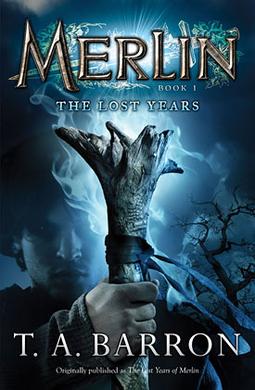
The Lost Years is a novel by T. A. Barron, published by Penguin Group USA about the legendary wizard Merlin's youth. The book is the first in the 12-book Merlin Saga, and was originally published as The Lost Years of Merlin, book one of the Lost Years of Merlin 5-book series.
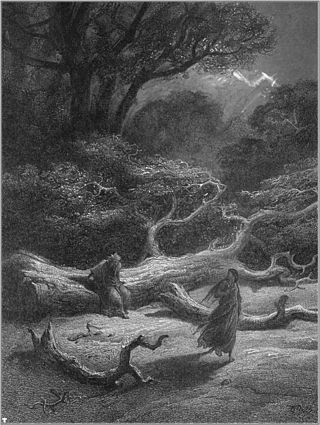
Brocéliande, earlier known as Brécheliant and Brécilien, is a legendary enchanted forest that had a reputation in the medieval European imagination as a place of magic and mystery. Brocéliande is featured in several medieval texts, mostly related to the Arthurian legend and the characters of Merlin, Morgan le Fay, the Lady of the Lake, and some of the Knights of the Round Table. It first appeared in literature in the Roman de Rou chronicle by Wace in 1160 and today is most commonly identified as Paimpont forest in Brittany, France.
Geoff Taylor is an English fantasy artist.

Paimpont Forest, also known as Brocéliande Forest, is a temperate forest located around the village of Paimpont in the department of Ille-et-Vilaine in Brittany, France. Covering an area of 9,000 hectares, it is part of a larger forest area that covers the neighboring departments of Morbihan and Côtes-d'Armor. It contains the castles Château de Comper and Château de Trécesson as well as the Forges of Paimpont, a national historical site. It has been associated with the forest of Brocéliande and many locations from Arthurian legend, including the Val sans retour, the tomb of Merlin, and the fountain of Barenton.

Robert Paul Holdstock was an English novelist and author best known for his works of Celtic, Nordic, Gothic and Pictish fantasy literature, predominantly in the fantasy subgenre of mythic fiction.

Mythago Wood is a fantasy novel by British writer Robert Holdstock, published in the United Kingdom in 1984. Mythago Wood is set in Herefordshire, England, in and around a stand of ancient woodland, known as Ryhope Wood. The story involves the internally estranged members of the Huxley family, particularly Stephen Huxley, and his experiences with the enigmatic forest and its magical inhabitants. The conception began as a short story written for the 1979 Milford Writer's Workshop; a novella of the same name appeared in the September 1981 edition of The Magazine of Fantasy & Science Fiction.

Lavondyss also titled Lavondyss: Journey to an Unknown Region is a fantasy novel by British writer Robert Holdstock, the second book in his Mythago Wood series. Lavondyss was originally published in 1988. The name of the novel hints at the real and mythological locales of Avon, Lyonesse, Avalon and Dis; within the novel Lavondyss is the name of the remote, ice-age heart of Ryhope wood.
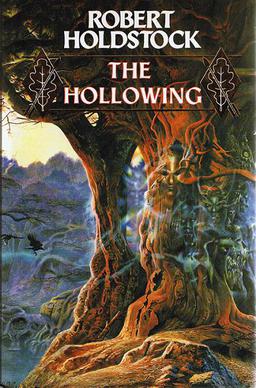
The Hollowing is a fantasy novel by British writer Robert Holdstock, the third in the Mythago Wood series written. It was originally published in 1993. The title refers to a magical pathway, or hollowing, an archaic English term for a sunken lane or hollow-way. The Hollowing was inspired by the story Sir Gawain and the Green Knight.
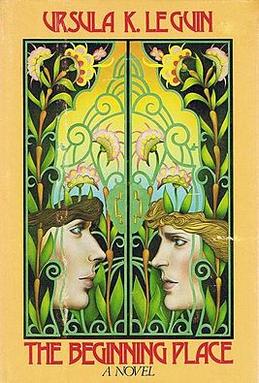
The Beginning Place is a short novel by American writer Ursula K. Le Guin, written in 1980. It was subsequently published under the title Threshold in 1986. The story's genre is a mixture of realism and fantasy literature. The novel's epigraph "What river is this through which the Ganges flows?" is quoted from Jorge Luis Borges. The novel has been subject to critical studies comparing it to C.S. Lewis' The Chronicles of Narnia, Lewis Carroll's Through the Looking-Glass and William Shakespeare's As You Like It.

The Bone Forest is a collection of fantasy short stories by British writer Robert Holdstock, published in 1991 (UK) and 1992 (US). It opens with a novella of the same name, followed by seven short stories. The novella is a prequel to the entire Mythago Wood cycle. According to the author it was written "to fill in the background and back-story to Mythago Wood" at the request of a screenwriter who was working on a planned movie version of Mythago Wood.

Gate of Ivory, Gate of Horn is a fantasy novel by British author Robert Holdstock. It was originally published in the United States in 1997 The story is a prequel to Mythago Wood and explores Christian Huxley's quest into Ryhope Wood and the apparent suicide of his mother, Jennifer Huxley. The title of the book refers to the gates of horn and ivory described in both Homer's Odyssey and Virgil's Aeneid.
This is a bibliography of fantasy author Robert Holdstock.
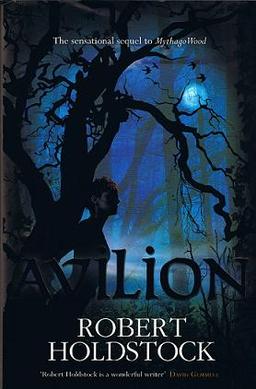
Avilion is a fantasy novel by British author Robert Holdstock. It was published in the United Kingdom on July 16, 2009. It is his first Ryhope wood novel since Gate of Ivory, Gate of Horn was published in 1997. Avilion is Tennyson's term for Avalon in Idylls of the King. Avilion is described by Tennyson as an island valley with ideal weather and fertile land.

The Story of King Arthur and His Knights is a 1903 children's novel by the American illustrator and writer Howard Pyle. The book contains a compilation of various stories, adapted by Pyle, regarding the legendary King Arthur of Britain and select Knights of the Round Table. Pyle's novel begins with Arthur in his youth and continues through numerous tales of bravery, romance, battle, and knighthood.

Rebecca Roanhorse is an American science fiction and fantasy writer from New Mexico. She has written short stories and science fiction novels featuring Navajo characters. Her work has received Hugo and Nebula awards, among others.
